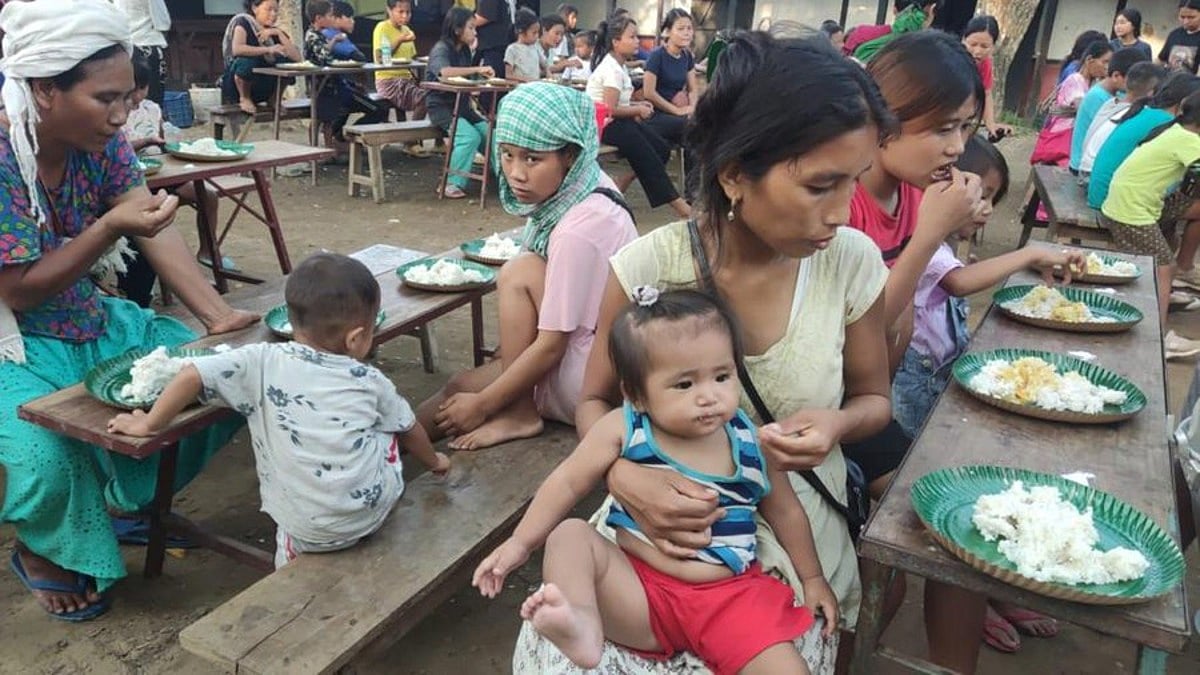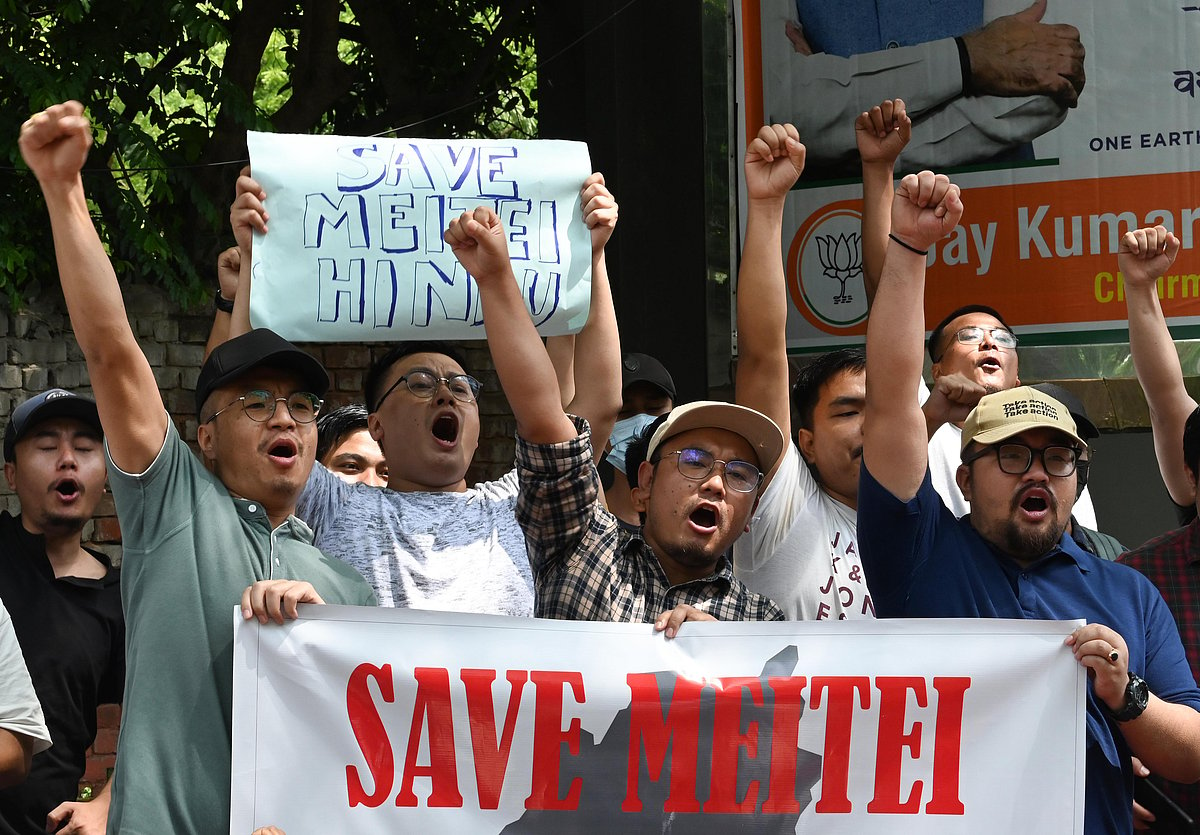Rajiv Gandhi, the Mizoram Peace Accord and Manipur Today
On the former Prime Minister’s death anniversary on May 21, it is worth recalling how the Mizoram Peace Accord was pulled off—and what lessons it holds for Manipur

The Mizoram Peace Accord of 1986 may have receded from public memory; but given what is happening in Manipur, it is instructive to recall the historic accord.
Rajiv Gandhi (1944–1991)—whose death anniversary falls on May 21, today—was then Prime Minister and instrumental restoring peace in Mizoram along with R.D. Pradhan, then the home secretary.
The Mizo National Front (MNF) and the Mizo National Army had been leading an insurgency since the mid-1960s, demanding Independence from India. As general secretary of the All India Congress Committee, Rajiv Gandhi visited Aizawl in 1983, making efforts to end the insurgency and initiate a dialogue with the insurgents. But the dialogue ran into a roadblock with the Government of India’s refusal to agree to the insurgents’ conditions. The assassination of then-Prime Minister Indira Gandhi in October 1984 brought negotiations to a standstill.
In September 1985, Rajiv Gandhi entrusted R.D. Pradhan with the task of resuming the dialogue. MNF leader Laldenga drove a hard bargain and by June 1986 the negotiations were again at breaking point. Pradhan is said to have invited Laldenga to have a cup of tea in his office on 27 June 1986. He was retiring in three days’ time and advised Laldenga to accept the terms offered by the government. His successors were unlikely to offer better terms, he told Laldenga, who left without making any commitment.
On 30 July, Laldenga returned even as Pradhan was leaving for his farewell. Laldenga said he was ready to sign the peace accord, but Pradhan exclaimed that it was too late and he no longer had the authority to push the paperwork through. But at Laldenga’s insistence, after the farewell event, they both drove to the Prime Minister’s residence on Race Course Road in New Delhi.
Prime Minister Rajiv Gandhi summoned a meeting of the cabinet committee on security at his residence the same evening. R.D. Pradhan was given an extension till midnight and authorised to finalise the draft of the peace accord. The accord was signed and announced by 9.30 pm. The MNF agreed to lay down arms, cease hostilities and accept the Indian Constitution. Since then, Mizoram celebrates June 30 as the Peace Accord Day.
Also Read: Why we are indebted to Rajiv Gandhi
Also Read: Why Manipur is Burning

Even more remarkably, Rajiv Gandhi sacrificed a Congress government, allowed Laldenga to function as interim chief minister and then held a free and fair election, which the Congress lost and Laldenga won, becoming the first chief minister of Mizoram.
The Mizo Accord has gone down in history as one of several long-lasting peace accords that Rajiv Gandhi signed during his solitary term as Prime Minister, among them the Punjab, Assam and Indo–Sri Lanka accords.
The determination of the young prime minister was even more remarkable because the Indian Army had bombed and flattened Aizawl when his mother Indira Gandhi was Prime Minister in her turn.
Notably, the Mizos—who wanted either independence or a merger with Burma (now Myanmar), with which they had deep bonds rooted in ethnicity—were trying to include the tribes from Manipur in their demands for recognition and political reorganisation as well.
There are few such examples of prime ministers rising above narrow political and partisan interests, of sacrificing even their own party's outlook to ensure peace and harmony in the national interest.
Rajiv Gandhi never broadcast his 'mann ki baat', nor did he consider that people might be punished for not listening to his speeches. But after the Mizoram Accord was signed, he undertook a 72-hour goodwill mission to Mizoram, accompanied by his spouse Sonia Gandhi.
The Indian National Congress may have lost the election in Mizoram, but India and the Indian Constitution won.


Now 37 years later, the Indian government’s 'conduct' in handling the communal clashes in Manipur is a study in contrast.
Although rioting broke out on 3 May 2023, almost three weeks later, Prime Minister Narendra Modi has yet to utter a word on it to the citizens—many of whom in Delhi have been holding demonstrations on the streets.
While several state governments have worried and rushed to on one hand safeguard their own and on the other accommodate the fleeing people of Manipur, Union home minister Amit Shah is yet to visit the state. The BJP’s own MLAs and tribal ministers have accused the state government of having incited and encouraged rioters. They say that tribal communities have been driven out of Imphal and Meiteis have been forced to leave the hills. The divide is unbridgeable, they say, and the discontent is threatening to engulf adjoining Mizoram, with whom Manipur’s Kuki-Chins share ethnic links.
It is no secret that the 'double engine' government in Manipur and in New Delhi have tried to derive political benefits by driving a wedge between the mostly Hindu Meiteis and mostly Christian Kukis. The fire that they have lit threatens to destroy a precarious peace carefully maintained over the last four decades.

I had a first-hand account when a fellow participant at a training camp who was from Manipur received information that her house and car had been set on fire and her pet dogs had been shot dead. Hours went by before she could connect with her sister—but before long, they were disconnected again. The mob had reached her sister's place as well. She was helpless as information kept coming in about her husband's injury and her children gone missing for six hours while they hid from the mob.
The tragedy has divided peoples, families and the state. There is anger on both sides and those who were friends till last month can no longer trust each other. They are united in pain, however.
India's G-20 presidency with its motto of 'vasudhaiva kutumbakam' (the whole world is a family) appears farcical when fellow Indians have become refugees in their own homeland. The prime ministers and the BJP leaders spent much time debating and promoting the film The Kerala Story. They had made much of the film The Kashmir Files too. Why are they so quiet on the ‘Manipur Story’?
The author is a former member of the Lok Sabha.
Follow us on: Facebook, Twitter, Google News, Instagram
Join our official telegram channel (@nationalherald) and stay updated with the latest headlines
